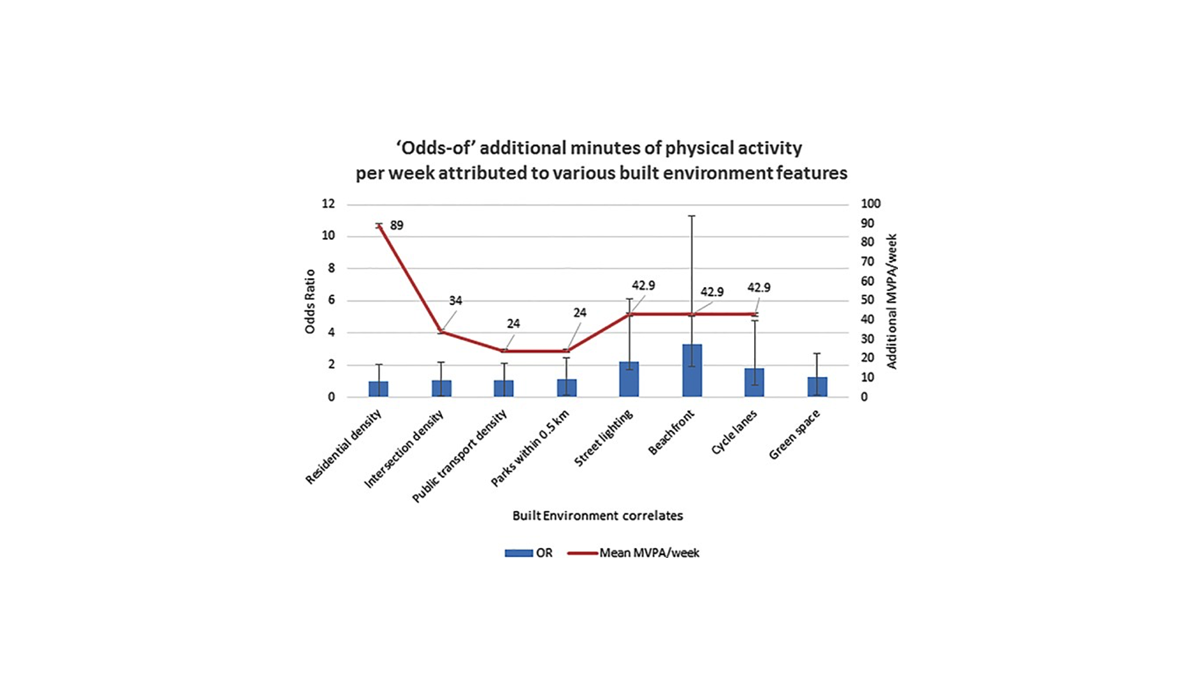In 2018, 42.4% of adults over the age of 20 were classified as obese. Treatment of obesity and related health problems cost $147 billion, more than three times the total state budget of Massachusetts. Typical treatments to encourage weight loss focus on physical exercise and healthy eating. However, many people are denied access to nutritious food and exercise spaces.
A study by Raji Devarajan and colleagues evaluated the effect of urban elements that aid in enhancing health and increasing exercise frequency. As illustrated above, all eight features increased the odds of additional exercise, with varying effects on additional moderate to vigorous physical activity (MVPA) per week. The researchers found characteristics such as residential and intersection density increase the connectivity and walkability of neighborhoods. Having nearby parks, proper street lighting and bike lanes ensure safe conditions for pedestrians and bicyclists.
Increased collaboration between public health professionals and city planners can make healthy built environment features a reality. City planning needs to focus on pedestrians rather than vehicles to prioritize safety and accessibility features. Preparing the built environment must be done equitably as minority and low-income neighborhoods tend to have higher obesity rates among their residents, and lack green space, adequate sidewalks, and good public transportation.
The authors argue that the health benefits of architectural improvements and people-focused city planning exist beyond increased physical activity. For example, green spaces are associated reduced stress, better birth outcomes, and improved mental wellbeing.
Databyte via Devarajan R, Prabhakaran D, Goenka S. Built environment for physical activity—An urban barometer, surveillance, and monitoring. Obesity Reviews. 2019;21(1).














